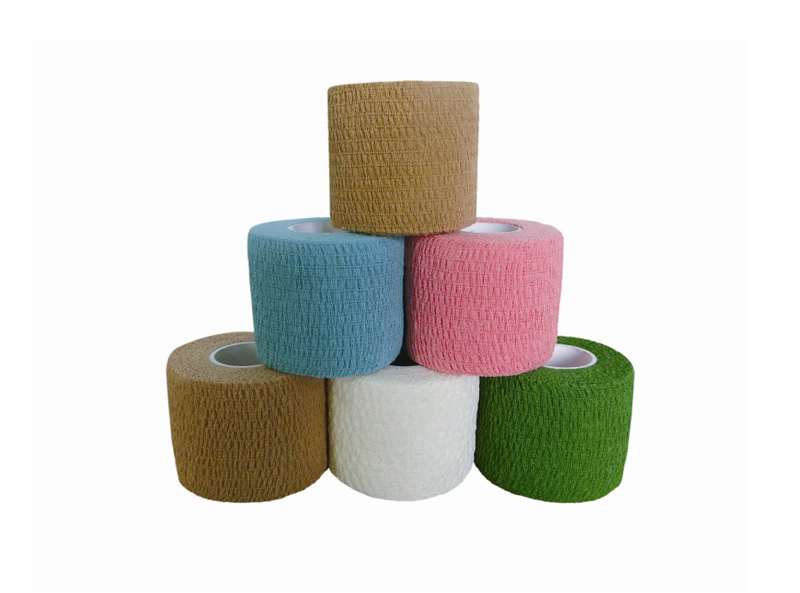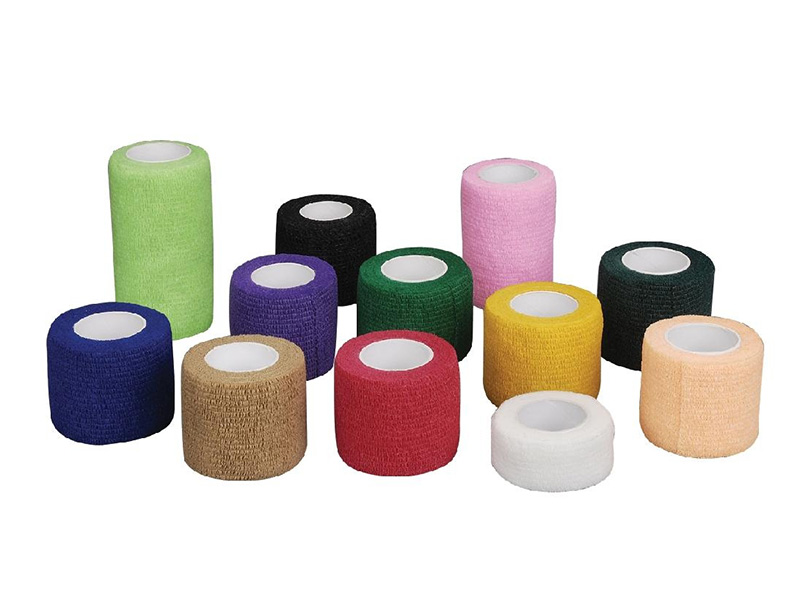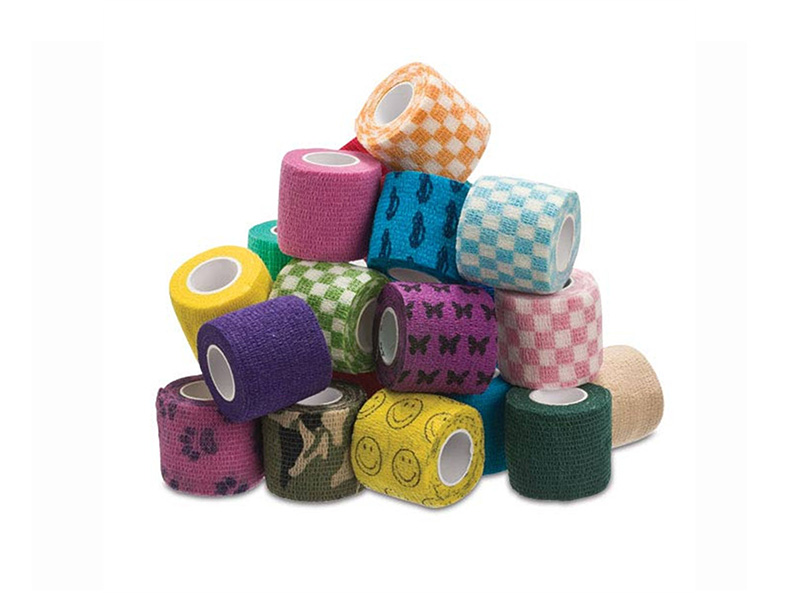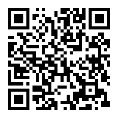Instruction and precautions of physio therapy kinesiology tape
 Feb 25, 2020|
Feb 25, 2020| View:612
View:612Generally speaking, a wide physio therapy kinesiology tape is used for large and thick parts; when bumps and bends are encountered, it is necessary to cut a part of the wider tape to make it Y-shaped or X-shaped and fix it separately from both sides.
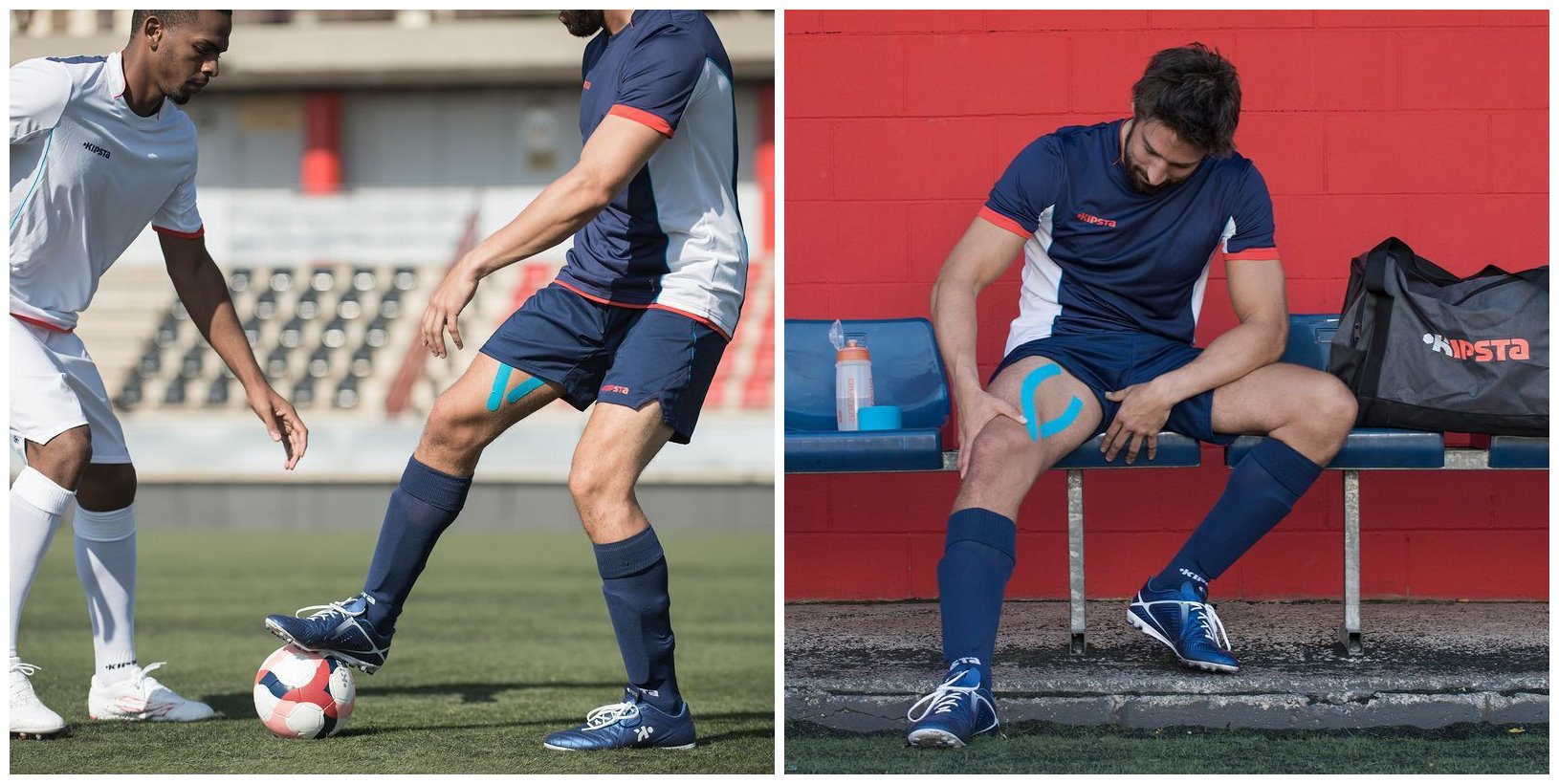
How to paste physio therapy kinesiology tape?
1. Find out the pain points or areas according to the activity of muscles and joints.
2. According to the length and shape of the muscle, choose the length and width of the tape, and stick it along the long axis and direction of the muscle. Use narrow tape for wrists and other parts and wide tape for waist and thighs.
3. Don't stretch the cloth hard, just stick it flat.
4. When pasting, do not tear off the inner paper first. It is better to tear it off while pasting. If all the inner stickers are torn off at once, the stickers can easily be rolled together.
5. Make sure that all corners and edges are pasted well.
6. It feels too tight after pasting, so remove it and paste it again. It's better to feel comfortable after pasting.
Precautions of physio therapy kinesiology tape
1. The part to be pasted shall be clean, and the sweat and soil shall be wiped dry.
2. The pasted part can be extended to the maximum extent, such as straightening the legs.
3. After pasting, you can take a bath, pat gently with a towel after washing, and absorb water.
4. Remove the cloth if there is itching. Press on the skin and gently tear it off.
5. Shoulder, wrist, and elbow should be pasted for 2-3 days continuously.
6. People with sore muscles and frequent cramps should stick it on before exercise.
A roll of kinesiology tape can be used about 8-14 times, depending on where you want to apply it. It can be pasted on the painful muscle during active contraction or its antagonistic muscle, that is, on the muscle which plays an active contraction role when doing the opposite action of this painful action. For example, when the thigh is lifted forward, the pain can not only be attached to the front of the thigh but also the back of the thigh.



